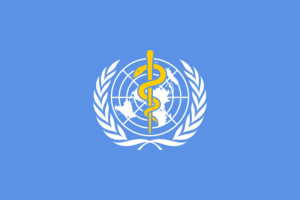30
Jan
American Chemistry Council Attacks Independent Science Conducted by International Agency
(Beyond Pesticides, January 30, 2016) The International Agency for Research on Cancer (IARC), the World Health Organization’s (WHO) cancer research branch, is again under attack. The most recent assault comes from the American Chemistry Council (ACC), which represents major U.S. chemical companies such as Bayer, Dow, Dupont and Monsanto and is calling on WHO to rein in IARC, claiming the agency of “dubious and misleading work” when classifying potential carcinogens. According to the ACC’s website, the Council launched the Campaign for Accuracy in Public Health Research this past Wednesday and it is unclear what steps it will take try to undercut the agency. The ACC is specifically criticizing IARC’s monograph program, claiming that the program “suffers from persistent scientific and process deficiencies.”
IARC is a France based self-governing branch of WHO, which is an independent agency working with over 150 countries to “build a better, healthier future for people all over the world,” as stated in the mission statement on their website. Monographs published by IARC are evaluations on a variety of products and lifestyle choices that have ranged from the consumption of processed meats and coffee to the usage of mobile phones and the controversial use of glyphosate in agriculture. In March of 2015, IARC released its findings on glyphosate, which concluded that there is sufficient evidence of carcinogenicity based on laboratory studies.
This attack on IARC follows one in the U.S. House of Representatives’ Committee on Oversight and Government Reform in October 2016. The Committee summoned the National Institutes of Health to answer questions about taxpayer contributions to WHO’s cancer agency. The committee had problems with IARC scientists’ findings that glyphosate is a probable carcinogen. The move was led by Rep. Jason Chaffetz (R-UT), chairman of the committee, and was a clear attempt to challenge IARC’s March 2015 findings on glyphosate. In defending IARC’s previous findings, IARC director Christopher Wild, Ph.D. rejected Rep. Chaffetz’ criticisms and defended IARC’s findings, known as “monographs,” as “widely respected for their scientific rigor, standardized and transparent process and. . .freedom from conflicts of interest.”
ACC represents the vested economic interest of large U.S. chemical companies. which determine its positions. Cal Dooley CEO and president of the ACC has said in a statement about their call to strip IARC’s program, saying that “IARC monographs program has been responsible for countless misleading headlines about the safety of the food we eat, the jobs we do and the products we use in our daily lives.” IARC director Christopher Wild, Ph.D. has made it clear that IARC is solely concerned with uncovering the truth through sound science, not pushing any sort of hidden agenda.
Glyphosate, produced and sold as Roundup by Monsanto, is touted as a “low toxicity” chemical and “safer” than other chemicals by EPA and industry and is widely used in food production and on lawns, gardens, parks, and children’s playing fields. However, IARC’s classification of glyphosate as a Group 2A “probable” carcinogen finds that glyphosate is anything but safe. According to IARC, Group 2A means that the chemical is probably carcinogenic to humans based on sufficient evidence of carcinogenicity in experimental animals. The agency is considering the findings of an EPA Scientific Advisory Panel report, along with several recent studies in making its conclusion. Advocates want the agency to also consider studies that show glyphosate causes DNA and chromosomal damage in human cells, and epidemiologic studies that show elevated levels of non-Hodgkin’s lymphoma are associated with glyphosate exposure.
Independent peer-reviewed science both in and outside of the U.S., including IARC, points to a growing list of adverse effects from pesticides and genetically engineered (GE) crops, ranging from the decline of bees to the carcinogenicity of the widely used herbicide glyphosate. It is critical that federal scientific agencies tasked with protecting human and environmental health are able to inform the public without repercussions from industry groups. Beyond Pesticides supports the independent science conducted by IARC, and urges that its work continues ungagged by industry groups.
All unattributed positions and opinions in this piece are those of Beyond Pesticides.
Source: Business Insider and Reuters










